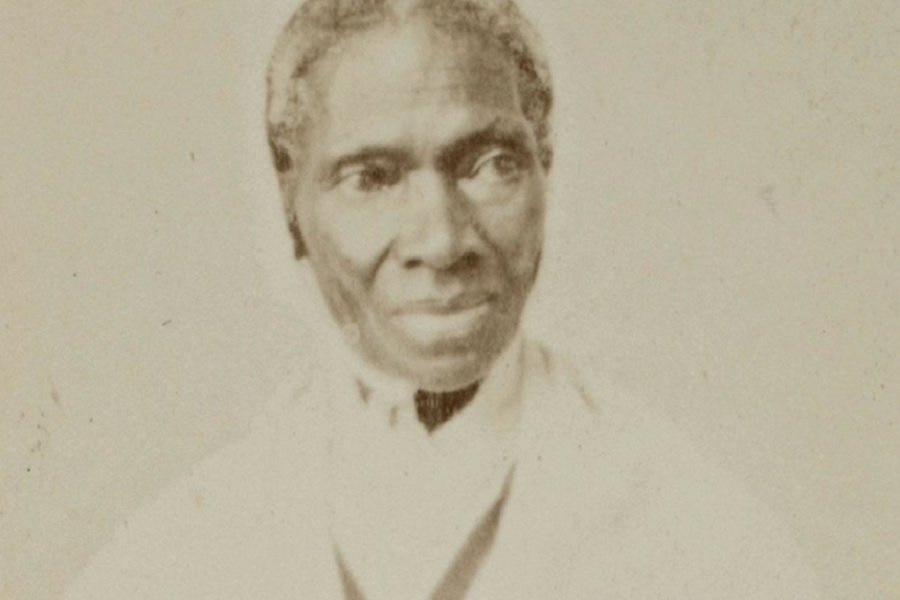Who was Sojourner Truth?
Some of the few historical women we learn about in school consist of names like Rosa Parks and Harriet Tubman. While learning more about Black History Month, I stumbled across Sojourner Truth and wondered, “Why hadn’t I learned about her?” After becoming the first black woman to win a court case against a white man and traveling to Washington D.C. to meet Abraham Lincoln, surely her accomplishments and what she did to help women and freed slaves should be more recognized and taught in schools. This is what we should’ve learned.
Sojourner Truth, born Isabella “Belle” Baumfree, was one of 12 children born into slavery circa 1797 to parents James and Elizabeth, who were owned by Colonel Hardenbergh in dutch-controlled Ulster County, NY. She and her family eventually changing ownership to Hardenbergh’s son, Charles, after his death. Belle would later be sold at auction for the first time at age nine for $100, then twice more during her childhood. She was eventually purchased and resided in West Park, NY with owner John Dumont, where she learned English for the first time.
Around age 18, Ms. Baumfree met another slave named Robert, at a neighboring farm, which resulted in the birth of a single child, Diana. They were then forbidden from seeing each other further by Robert’s owner. Ms. Baumfree then married an older man, Thomas, who she had three children with: Peter, Elizabeth, and Sophia.
Toward the end of the 18th century, the abolition of slavery had come into view eventually leading to the mass freedom of slaves on July 4, 1827. Dumont rescinded on his promise to emancipate her, resulting in her escape to freedom with her daughter, Diana. A year later, she tried for the freedom of her son, but learned he was illegally sold to a slave owner in Alabama, prompting her to take the case to court where she eventually won. This moment made her the first black woman to win a court case against a white man. Peter was then returned to New York where he resided with her until 1839. He began work on-board the “Zone of Nantucket” and after correspondence of only a few letters with him, Ms. Baumfree never heard from her son again.
After becoming a Methodist and choosing the name “Sojourner Truth” in 1843, she began traveling throughout the country, telling her life story. She also made a living by selling pictures of herself. In 1851, she delivered her famous speech Ain’t I A Woman? in Ohio at the National Women’s Convention, saying, “If the first woman God ever made was strong enough to turn the world upside down all alone, these women together ought to be able to turn it back, and get it right side up again! And now they is asking to do it, the men better let them.” Aside from advocating for women and the rights of freed slaves, “Ms. Truth” also worked as a recruiter for black troops in the Union Army during the early 1860’s while also speaking out in favor of prison reform, but against the idea of capital punishment.
On October 29, 1864, she made her way to Washington, D.C. where she met President Abraham Lincoln and spoke with him about her time in slavery. A year later, she was working to end the discrimination of black passengers in streetcars. To do this, she proceeded with non-violent action by riding in streetcars designated for white riders. Another lawsuit was filed when she was injured by a conductor after being hit by one of the streetcars. She won her case again. “Ms. Truth” also advocated for land-grants from the government for former slaves to help them establish independence and the ability to provide for themselves.
Sojourner Truth died in Battle Creek, Michigan in 1883 after many long years of helping those who were voiceless. Her work to abolish slavery and her advocacy for women’s suffrage, although not often given enough recognition, helped to shape the nation into what it would later become.
Copyright © Cheyenne Prouty (2017) All Rights Reserved.







